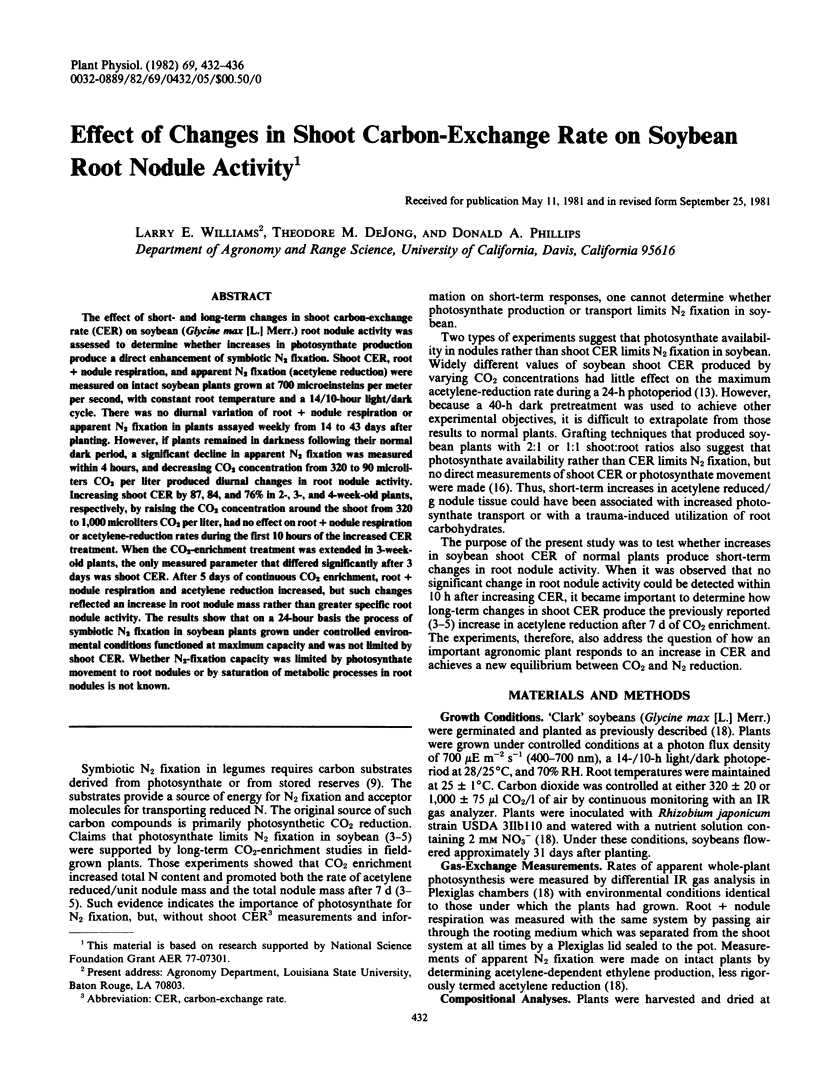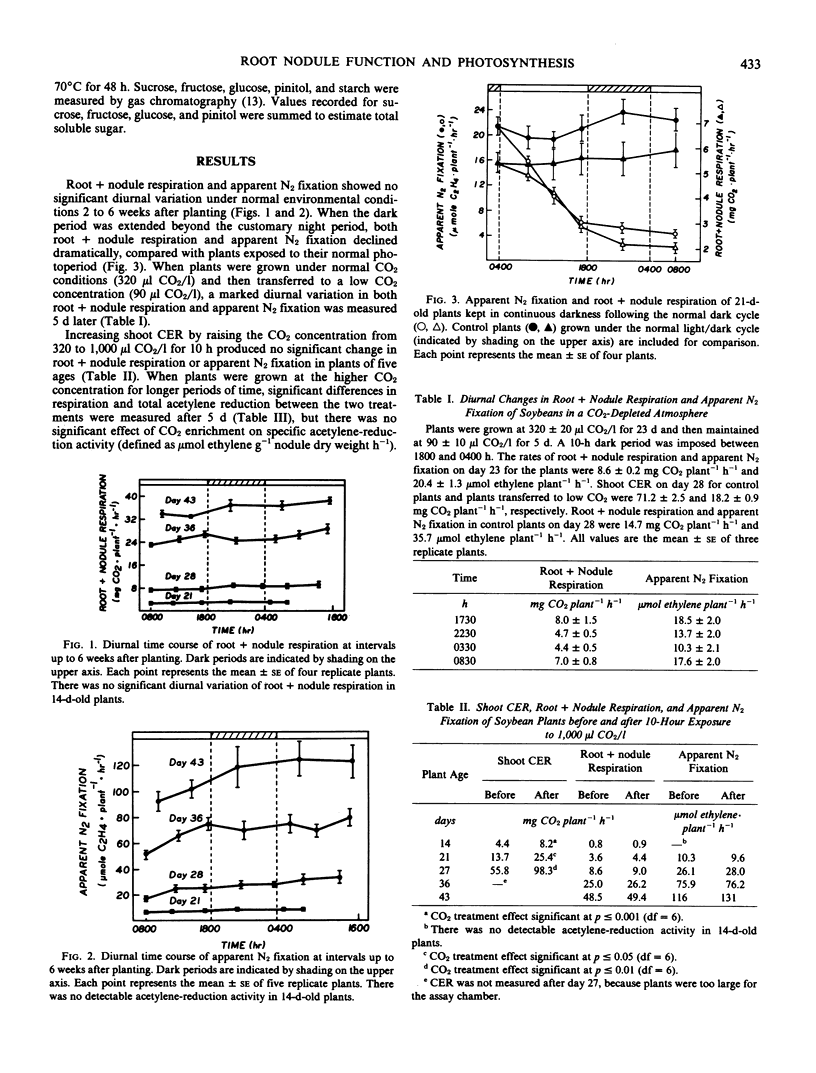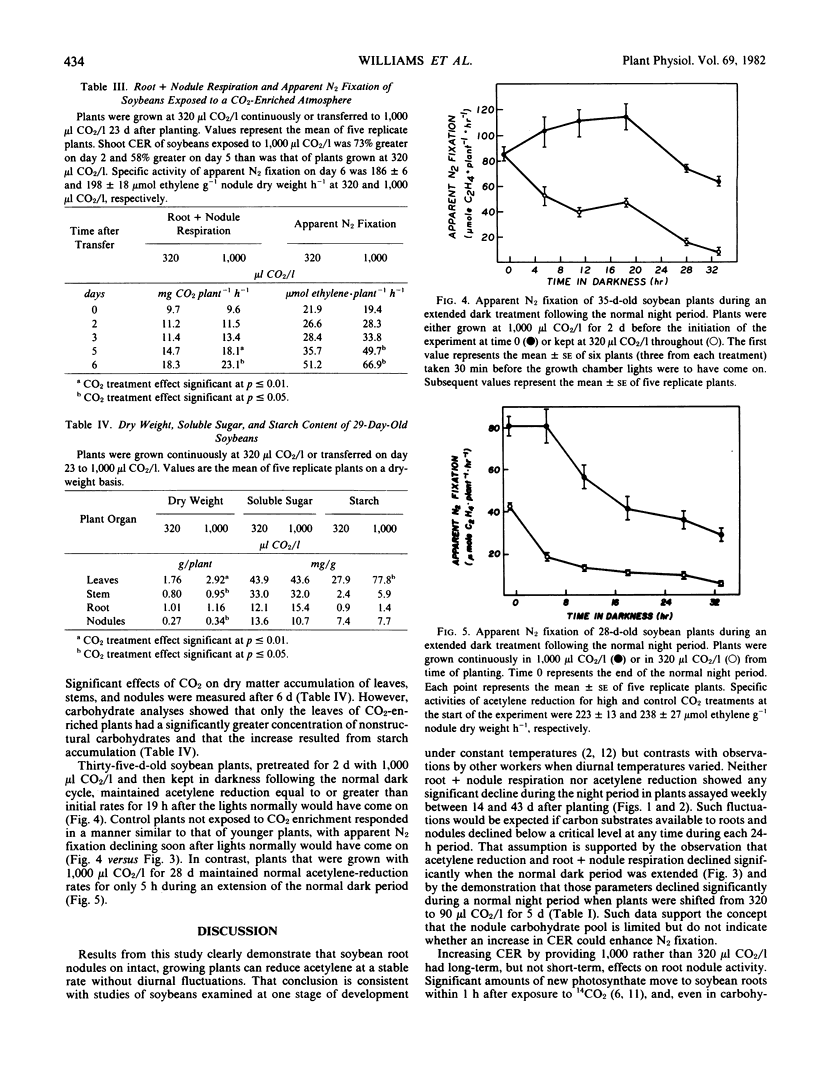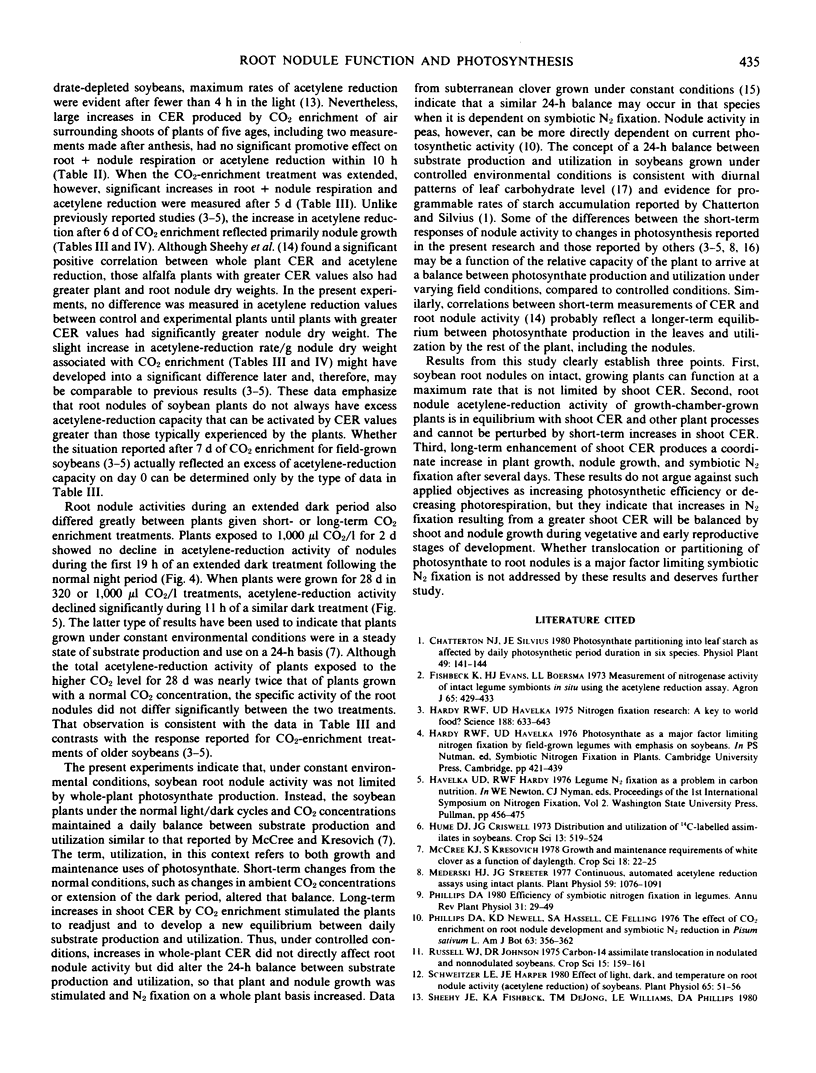Abstract
The effect of short- and long-term changes in shoot carbon-exchange rate (CER) on soybean (Glycine max [L.] Merr.) root nodule activity was assessed to determine whether increases in photosynthate production produce a direct enhancement of symbiotic N2 fixation. Shoot CER, root + nodule respiration, and apparent N2 fixation (acetylene reduction) were measured on intact soybean plants grown at 700 microeinsteins per meter per second, with constant root temperature and a 14/10-hour light/dark cycle. There was no diurnal variation of root + nodule respiration or apparent N2 fixation in plants assayed weekly from 14 to 43 days after planting. However, if plants remained in darkness following their normal dark period, a significant decline in apparent N2 fixation was measured within 4 hours, and decreasing CO2 concentration from 320 to 90 microliters CO2 per liter produced diurnal changes in root nodule activity. Increasing shoot CER by 87, 84, and 76% in 2-, 3-, and 4-week-old plants, respectively, by raising the CO2 concentration around the shoot from 320 to 1,000 microliters CO2 per liter, had no effect on root + nodule respiration or acetylene-reduction rates during the first 10 hours of the increased CER treatment. When the CO2-enrichment treatment was extended in 3-week-old plants, the only measured parameter that differed significantly after 3 days was shoot CER. After 5 days of continuous CO2 enrichment, root + nodule respiration and acetylene reduction increased, but such changes reflected an increase in root nodule mass rather than greater specific root nodule activity. The results show that on a 24-hour basis the process of symbiotic N2 fixation in soybean plants grown under controlled environmental conditions functioned at maximum capacity and was not limited by shoot CER. Whether N2-fixation capacity was limited by photosynthate movement to root nodules or by saturation of metabolic processes in root nodules is not known.
Full text
PDF




Selected References
These references are in PubMed. This may not be the complete list of references from this article.
- Hardy R. W., Havelka U. D. Nitrogen fixation research: a key to world food? Science. 1975 May 9;188(4188):633–643. doi: 10.1126/science.188.4188.633. [DOI] [PubMed] [Google Scholar]
- Mederski H. J., Streeter J. G. Continuous, automated acetylene reduction assays using intact plants. Plant Physiol. 1977 Jun;59(6):1076–1081. doi: 10.1104/pp.59.6.1076. [DOI] [PMC free article] [PubMed] [Google Scholar]
- Schweitzer L. E., Harper J. E. Effect of light, dark, and temperature on root nodule activity (acetylene reduction) of soybeans. Plant Physiol. 1980 Jan;65(1):51–56. doi: 10.1104/pp.65.1.51. [DOI] [PMC free article] [PubMed] [Google Scholar]
- Upmeyer D. J., Koller H. R. Diurnal trends in net photosynthetic rate and carbohydrate levels of soybean leaves. Plant Physiol. 1973 May;51(5):871–874. doi: 10.1104/pp.51.5.871. [DOI] [PMC free article] [PubMed] [Google Scholar]
- Williams L. E., Phillips D. A. Effect of irradiance on development of apparent nitrogen fixation and photosynthesis in soybean. Plant Physiol. 1980 Nov;66(5):968–972. doi: 10.1104/pp.66.5.968. [DOI] [PMC free article] [PubMed] [Google Scholar]


